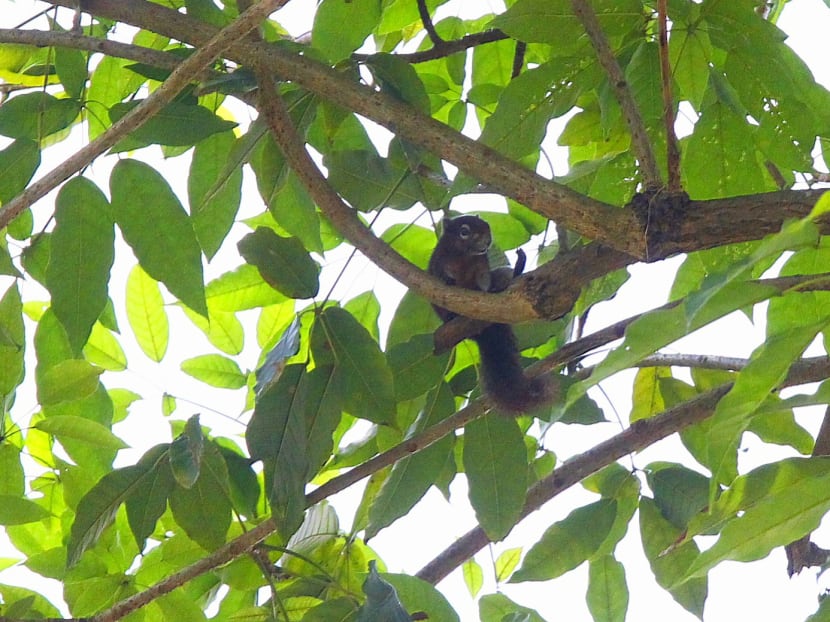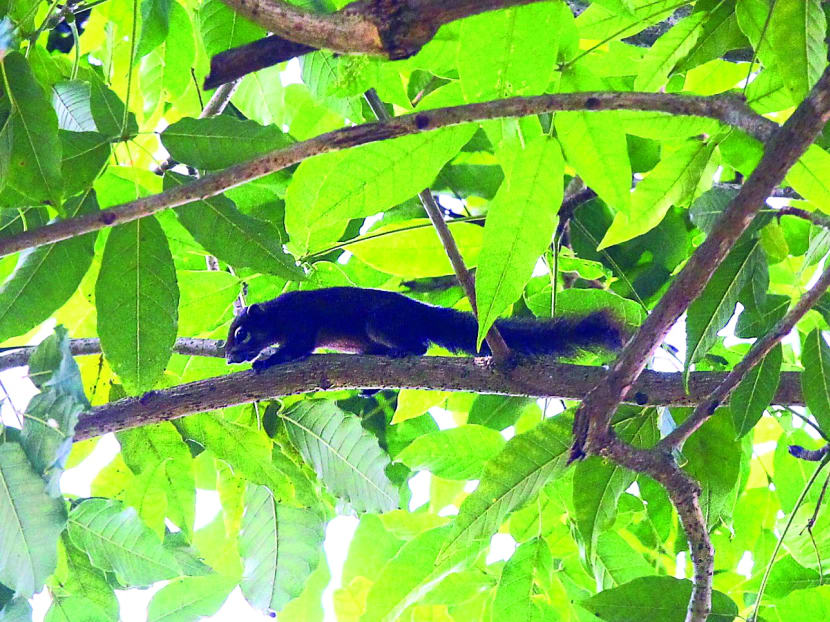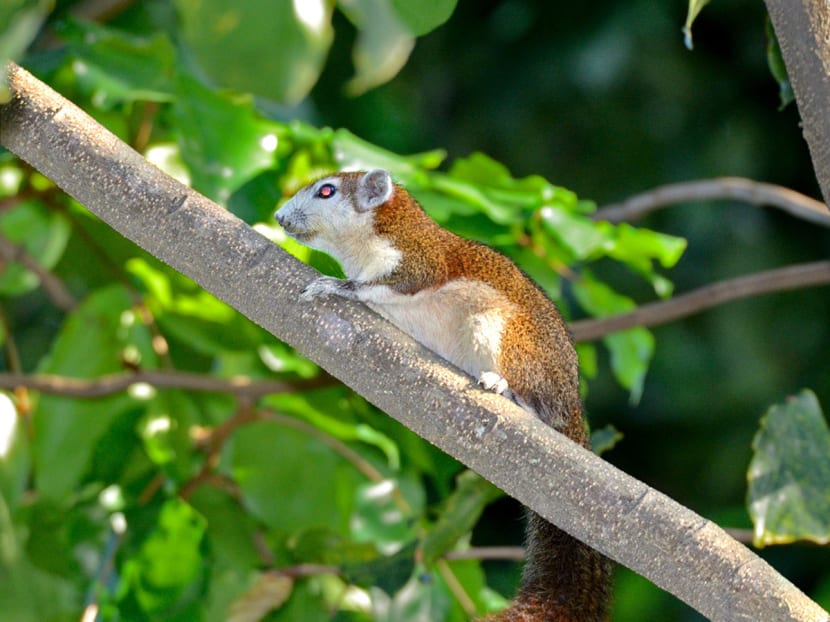Bidadari development could force squirrels out, threaten native species
SINGAPORE — With the Bidadari area due for housing development, some nature enthusiasts are concerned that a non-native squirrel species there could venture closer to nature reserves, threatening native species.



SINGAPORE — With the Bidadari area due for housing development, some nature enthusiasts are concerned that a non-native squirrel species there could venture closer to nature reserves, threatening native species.
The creature in question is the Finlayson’s squirrel, a non-native species believed to have originated from escaped or abandoned pets. It has been around for more than 20 years, said Nature Society Singapore council member Tony O’Dempsey. It can be sighted in Bidadari and Woodleigh Park, but is native to Cambodia, Laos, Myanmar, Thailand and Vietnam.
Mr O’Dempsey and other nature enthusiasts believe the Finlayson’s squirrel, which is typically brown or orange-red with a lighter underside, should be removed as it is considered a fairly aggressive squirrel that could displace native species such as the slender squirrel and plantain squirrel. It also preys on small native animals like chicks and is known to damage the bark of trees.
“Further development of park connectors may aid the expansion of (the Finlayson’s squirrel’s) current range,” he said. It would do “a lot of damage” if it moves into the nature reserves.
The National Parks Board is aware of the squirrel’s presence in Bidadari and Woodleigh. The board “is in the process of working with non-governmental organisations and Singapore naturalists to monitor the population and study the appropriate measures to take, if necessary,” said Dr Geoffrey Davison, Deputy Director of the National Biodiversity Centre.
Despite a few sightings of the squirrel elsewhere in Singapore, Dr Davison said there was no evidence of any sustained population outside Bidadari and Woodleigh. Its impact on vegetation is also similar to that caused by native squirrel species.
However, he noted the impending development of Bidadari may displace the squirrel and result in competition for space and food with native species. He did not provide an estimate of the squirrel’s population, but said it has increased gradually over the years.
Members of the nature community called for a study on the current range and number of the Finlayson’s squirrel, also known as the variable squirrel. This would inform any management strategy for the squirrel and allocation of resources, said Nature Society President Shawn Lum.
“There’s been enough interest generated in the animal that we may soon see a group of people coming together to carry this out,” he added.
Experiments to determine the best way of removing the squirrels should also be done, said Mr O’Dempsey.
When asked about relocation possibilities for the squirrel, Chief Executive of the Animal Concerns Research and Education Society Louis Ng noted the lack of alternative nature areas in Singapore and said ACRES would be keen to look into the possibility of trapping and sending the squirrels back to their native countries.
“We don’t want to send the message animals can be just culled … it’s a problem we created and it’s a problem that we should solve — and it’s not by killing the animals,” he said.









